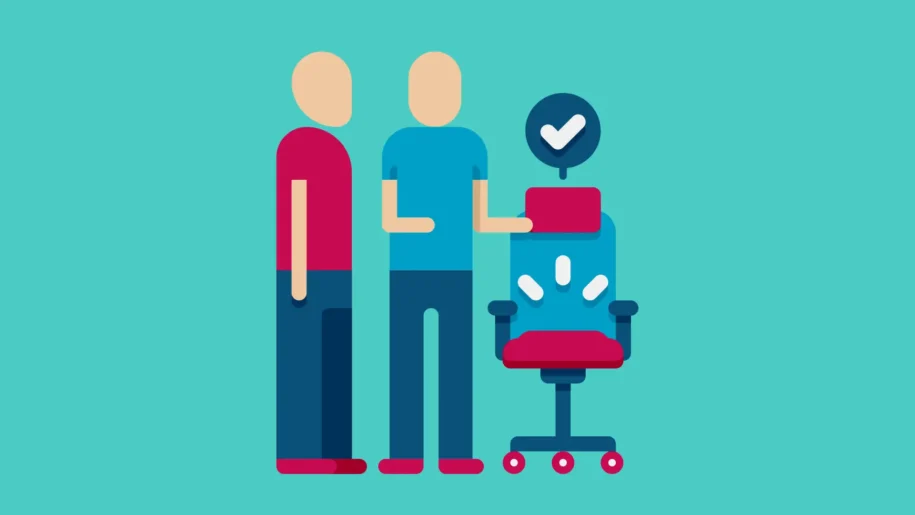Onboarding is a marathon. It is not a sprint. If you rush employees through the onboarding process, things can backfire and all your efforts will go to waste. Giving your new hires the time they need to settle in slowly can help them fully integrate and become a part of your corporate culture.
If you rush your new hires through the process, you will be missing out on valuable opportunities to help your team members bond with each other. Successful companies have well-designed onboarding strategies and processes to ensure that they retain their best talents and provide job satisfaction for their employees by matching skills to roles.
The most important rule for employee on-boarding is to help people feel they belong and to do so quickly. In order to execute this well, you need a carefully-crafted onboarding strategy. No one’s time should be wasted – neither yours nor the new hires. Therefore, employee onboarding should be organised, concise, and begin prior to their arrival on day one.
Not onboarding new employees properly will likely result in high turnovers and inefficiency. It will also lose precious time and money. The bottom line is that failing at onboarding new employees will lead to the employee having a bad impression of your company’s processes and culture, and will also highly impact your company’s results and reputation.
Here are 9 suggestions for you to make your employee onboarding experience pleasant for everyone involved.
1. Give a realistic idea of the job
Please make sure to make it clear to the prospect what their job scope is. They may have chosen you over others due to the job scope. This is really all about respecting the employee who has committed to join your organisation.
The employee should know what sort of tasks they will be working on before they accept the offer. If there may be tasks that are not within the core job scope (e.g. helping other colleagues in need, needing to OT), it is still better to inform the employee of this so the employee will know what they are getting themselves into.
Overstating or overselling the job can lead to problems during the onboarding process or during the first few months. A new hire with overly high or unrealistic expectations can feel let down if the job responsibilities or opportunities turn out to be underwhelming. Make sure your new team member knows what they are signing on for, what to expect from the position, and what they need to do to be successful in the role before you make a hiring decision and you’ll be less likely to lose a talented employee who becomes disillusioned with the company or job.
Download this Job Description Template
2. Begin prior to the new joiner’s arrival
Already excited about a new role, people will feel the need to quickly contribute and get the hang of things.
About 1-2 weeks before the employee’s first day, it is a good idea to send the prospect a list of items that the employee can read through and familiarise with at their own pace.
You can perhaps share the websites of clients that they may be dealing with, or some good reads of the company processes etc. This helps them to be better prepared and get settled down more quickly once they join your company.
3. Have an onboarding checklist
This Onboarding checklist should include items such as tools and information that they need to access, the first few tasks they need to accomplish, or even small pointers like whether they have set up their work space properly.
You can check against this every time and can easily identify what else is still pending. Having an onboarding checklist also helps save your time as you simply just need to always use the same onboarding checklist for every new employee.
Get your very own Employee Onboarding Checklist here.
4. Have an on-boarding buddy
On the new hire’s first day, it is good to connect them with an on-boarding buddy. An on-boarding buddy is one who’s dedicated role is to be someone that the new employee can count on for the first 3 weeks and continue to be connected but more loosely thereafter. This helps ensure that the new employee feels more welcome when they first join the company.
The on-boarding partner can be the one who is in charge of making sure that everything in the Employee Onboarding Checklist is checked.
5. Do a proper handover
The office environment should be a welcoming one and one way to make the new employee feel welcome is to do a proper handover. If the employee is taking over from someone who has resigned or is shifting departments, give the leaving employee ample time (perhaps 1-2 weeks) to prepare before the new employee joins. After this, give them about at least 1-2 weeks to run through everything with the new employee.
Doing so helps to ensure that the new employee understands the various nuances of the tasks much better and also gets on the ball more quickly. This also reduces any tension that may arise when the new employee does not fully understand what they are doing.
Here’s a free handover template that you can use
6. Share the company structure and company vision
Share the organisational chart and run through who’s who in the company. This helps the new hire know who to reach out to (and not to reach out to) when they need anything from a specific department.
Talk with new hires about the values of the organisation and what counts for success. Perhaps you already have a vision statement that mentions this. Otherwise, it will be useful to create one. Discuss the company vision with new hires and share some of the consistencies and inconsistencies between the written values and the lived values. Your organisation chart does not have to be too fancy. Easily create your very own organisation chart using a readily available and free tool like Google Slides, Microsoft Powerpoint or Canva.
7. Share the informal rules of the organisation
Humans are complex creatures and every organisation will have its own unique culture. It is best to help new hires learn the “culture” – the informal rules and on-goings of the organisation. Do people go for lunch at the same time? Is it a dress down only on Fridays or everyday? Does the staff work overtime often? Or do they tend to end work on time? Is there an interest group (e.g. an exercise group, a company-wide weekly bubble tea order group, a crafts group, a singing group etc.) chat that the new employee can join?
Help the new hire look around to see how the culture really works. What are the personality traits and style of leaders – innovative, by-the-books, decisive, cut-throat, bottom-line driven, fair, diverse, etc.?
This extra effort on the employer’s part will help the employee feel more valued and also adapt to the company culture better.
8. Foster a sense of belonging and connectedness
As the old saying goes, “A problem shared is a problem halved.”. Working in a team, as compared to working alone, helps the new employee build better rapport with their colleagues.
Working in teams also helps the new employee build allies, which is important for a more fruitful time at work. Your allies are likely to support your views and causes. They help solve problems, provide advice, act as a sounding board when you need a listening ear and offer a different perspective so you can view your organization more broadly.
9. Seek and incorporate feedback with appraisals
Don’t simply just throw a bunch of tasks to the new hire, expecting them to quickly get the hang of it, even if they may have had experience before, and only check in with them on their progress once a year. At the very least, just do a run through of their tasks and then get them rolling. Check in with the new employee every now and then to see how they are coping.
The entire performance appraisal process itself should not just be a once-a-year activity. Having the appraisal once a year does not help much with rapport between the manager and employee, especially when the employee is at a higher executive level and is supposed to handle tasks on their own.
Providing clear feedback to staff early and more frequently is critical in motivating the employee to perform. We recommend that such feedback/appraisals be on a quarterly basis. Also we recommend to record it all down, so you can look back and have a concrete view of the employee’s KPIs overtime.
It is best if you use an actual appraisal tool to track all your employees’ appraisals and key performance indicators. However, if you are on a budget, you can use this Employee Review template instead.
To summarize this article, not onboarding new employees properly will likely result in high turnovers and inefficiency.
Not properly onboarding new employees will also lose precious time and money. The bottom line is that failing at onboarding new employees will lead to the employee having a bad impression of your company’s processes and culture, and will also highly impact your company’s results and reputation.



Leave a Reply